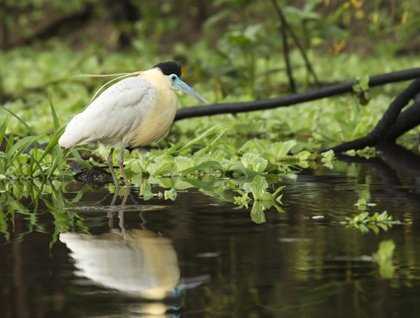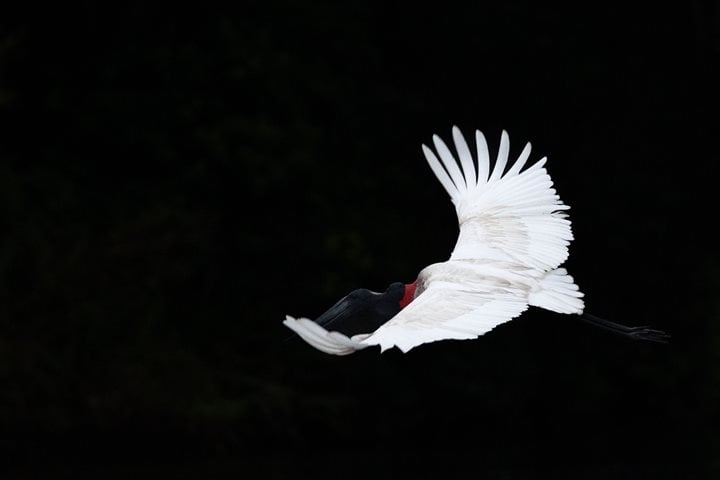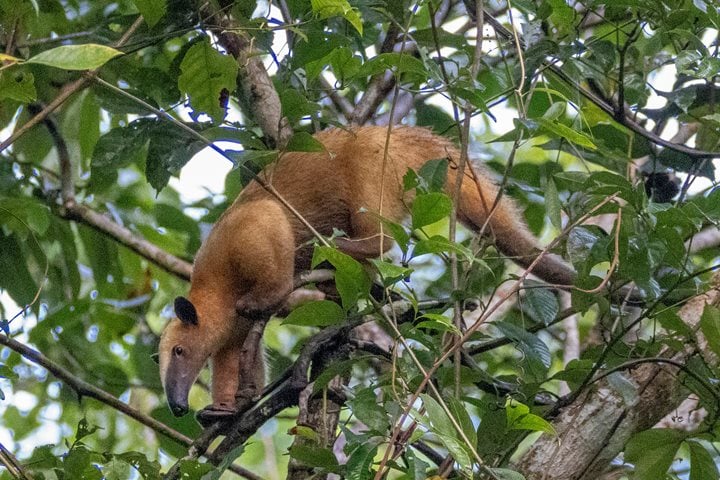After having our respective cups of coffee, we boarded the skiffs shortly after sunrise and went exploring a small tributary known as Nauta Caño. It didn’t take long for us to find interesting subjects to watch and photograph, since the inhabitants of the tropical rainforest are more active during the first couple of hours of the day. One of the first was a female brown-throated three-toed sloth that was drying herself in the sunshine after having spent most of the day yesterday under the rain. Yellow-headed caracaras, black-collared hawks, oriole blackbirds, horned screamers and a solitary swallow-tailed kite were some of the birds observed. We also found a group of saddle-backed tamarins, small monkeys that traveled quickly along the shoreline. Some people saw a few monk sakis too and a group of truly lucky souls got the privilege to watch one of Amazonia’s top predators, the harpy eagle!
During the later part of the morning the Delfin II arrived to the area where the Marañón River meets the Ucayali River and the ship’s siren indicated our official entry into the Amazon River, the world’s mightiest river! Well, at least according to Peru, because Brazil considers this place the starting point of the Solimoes River, and doesn’t call it the Amazon until it meets the Negro River farther east. Just a matter of names and politics of course! For us, the whole basin, Amazonia, is an amazing place. Anyway, after having a toast to celebrate our transit through the Amazon we headed upriver into the Ucayali and bordering the southern side of the Pacaya- Samiria National Reserve. The reserve is a huge protected area about half of the size of Costa Rica and during the next several days we will explore many more of the tributaries that come from deep inside it.
After several hours of traveling upriver on the Ucayali we arrived to Clavero Lake, an oxbow lake that was created when the looping river decided to make a shortcut a few years ago, leaving behind a horseshoe-shaped area of calm waters. There some of us decided to go swimming and enjoyed a fun time in the tannin-rich waters. Later we went exploring the area using the skiffs and discovered a lot of interesting wildlife; among the most remarkable sightings of the afternoon were four scarlet macaws, the first snail kite of the trip, and a group of pygmy marmosets. The pygmy marmoset is the world’s smallest primate, much smaller than a regular squirrel and very difficult to find. But today we enjoyed watching those diminutive monkeys as they climbed up and down while feeding on tree sap. On the way back to our floating home we enjoyed a beautiful sunset that marked the end of another wonderful day in the Peruvian Amazon.







